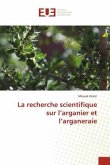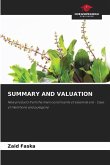The argan tree (Argania spinosa, Skeels L., Sapotaceae) is an endemic tree of southwest Morocco, where it plays a very important socio-economic and environmental role. It is deeply implanted in the daily life of rural populations and plays a fundamental role in their subsistence.The argan tree fights against desertification, protects soils against water and wind erosion, and maintains their fertility. In addition to this environmental role, it has a direct economic interest by providing oil, foliage, fodder, wood and indirectly by the agricultural productions that it allows under its shade. The argan tree provides a livelihood for 3 million people.Despite all these interests, we are witnessing an alarming decline in argan forests both in area and density. In less than a century, more than 2/3 of the forest has disappeared and we count 600 ha lost each year. This regression is mainly due to an ecological imbalance of anthropic (human) origin. In the mountains, there is overgrazingand overexploitation of wood, in the plains, the argan tree is cleared because it hinders the intensification of agriculture.








